-
Posts
9,236 -
Joined
-
Last visited
Content Type
Profiles
Forums
Blogs
Gallery
Posts posted by Lynneth
-
-
[Internal]
"The managers always talked about having the view from 30,000 feet. The only problem with having the view from 30,000 feet, is that at that height, everyone looks like ants."
Applications of Alenium beyond fuelling laser weapons had been studied every since it was discovered, but certain technologies lacked sufficient understanding to use it properly. However, in recent times new advances allowed for certain techniques to emerge that allowed for very local manipulation of gravitons - gravity itself. This allowed for the creation of 'graviton emitters', which could at the time only be very small (about as big as a golf ball in radius at most), though quite efficient. This in turn allowed for a prototype plasma weapon to be built.
Firstly, the weapon drew power from an Alenium cell and used that to fuel a powerful array of particle accelerators. Secondly, these accelerators then superheated a great number of atoms until they were ionised gas within the heat-proofed 'chamber'. Thirdly, two helical spirals of electromagnets in the barrel of the weapon pulsed simultaneously, bringing the plasma out of the chamber and both spinning it into a bolt as well as accelerating it to muzzle velocity. Finally, the graviton emitter in the muzzle of the weapon launched a graviton particle into the plasma bolt as it left the barrel.
This single particle was incredibly important, at least in the laboratory conditions that the weapon was tested in. It had been observed to possess a surprisingly strong gravitational pull that prevented the bolt from dissipating into a useless cloud of hot gases. The exact science behind it wasn't entirely clear - gravitons were newly observed particles. Without the emitter, however, the useful range of a plasma generator would be only a few inches to a foot.
In time, knowledge would be refined and added to. In time, knowledge of gravitons was improved, allowing for the emitter to be changed, optimised, in turn allowing progress to proper weaponry, and from there perhaps other applications.
That was what some would have the people with the money believe. In truth, trial and error were used liberally. Understanding of the plasma accelerator that converted the energy into a proper bolt and the electromagnet spiral that shaped it was sufficient that the scientists could use trial and error until they stumbled upon a working configuration of the three components. Small adjustments to the relative scale and distance between them then allowed to generate plasma bolts with subtly different properties, so producing different weapons. These plasma weapons could be considered a straightforward upgrade for existing laser weapons, inflicting heavier damage while maintaining similar range and accuracy, but the expense of making them would keep them to more specialised applications.
Soon enough plasma variants of heavy weapons with a higher rate of fire could be introduced, as well. For infantry, the machine-gun-equivalent called the 'Plasma Caster' was developed, while aircraft could now have the 'Plasma Blaster' mounted on them instead of autocannons or a gatling laser.
They worked on very similar principles. Both expelled large amounts of plasma in the form of a sustained stream, utilising a large generation array that continually discharged superheated plasma. In ordinary conditions it would be difficult to focus the stream and it would dissipate quickly, giving them short range and poor armour penetration - though permitting use as a sort of flame thrower. However, the 'problem' was solved by employing a ring of five graviton generators around the muzzle of the weapon. They fired sequentially, regularly injecting gravitons into the plasma and breaking the stream into a string of individual projectiles.
This effect replicated the high RoF of conventional automatic weapons and combined it with the extra damage of a plasma weapon. Both would make useful upgrades in the future. As for the flamer-version, it was deemed too unstable and fuel-demanding for regular use.
_________________
[Internal - 'Pichincha' 5/7]
Though bringing infrastructure up to par and spreading the religion of Tikal in the new states was good work, it wasn't sufficient to truly protect them. To change this, existing military bases would be repaired and expanded, radars and defence systems established. Pichincha would find a new naval base being built, as well as one major and one minor air base.[Internal - 'Guayas' 5/7]
Guayas too would receive a naval base, planned to be somewhat larger than the one in Pichincha. It would be combined with a large airbase while radar stations and various AA and anti-ship defences were in the process of being built wherever deemed necessary. The two new states would be defended more than adequately, sufficient to dissuade radical militias or the like from neighbouring regions trying to raid them.
-
Update, though not much changed.
-
[Internal]
"Each individual pipe contains a hot slurry of minerals drawn from the world's very crust and makes a sound like rain falling on a tin roof. When they converge on the trunk line the sound is a terrifying thunder, a thunder of untold wealth, and power."
Current armours utilising Alenium alloys with pre-alenium armours were excellent in many ways, superior to the basic composites that had been used up to that point. However, recent research suggested that even that could be improved significantly, while at the same time saving on mass. Laboratory tests suggested new manufacturing techniques may bring about a material nearly fifty percent more effective at absorbing damage than previous armour plate of similar size and weight. As the fundamental composition of the two types of plating was not dramatically different, the additional strength obviously arose from the production process - just like the difference that separates diamond from lumps of coal.
[center][URL=http://smg.photobucket.com/user/Lynneth_del_Serpentas/media/AE/CNRP/Corp/Crystals/Crystal03.jpg.html]
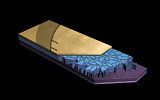 [/URL][/center]
[/URL][/center]The atomic structure of the alloy yielded the explanation. Like contemporary metals, Alenium alloys tended to have a crystalline form when solid, a compact and orderly arrangement of atoms. However, the various alloys newly found appeared to be amorphous rather than crystalline. Amorphous materials instead had an irregular and disorderly atom arrangement that prevented the formation of microscopic lines of weakness that can exist in crystalline structures, giving armour using this hardened plate enhanced heat and impact resistance.
This phenomenon was hardly unknown to science - exactly the same thing occurred when hot steel was quenched in cold water. However, applying the process to Alenium materials in mass-production turned out to be significantly more difficult - preventing the formation of a crystalline structure in some alloys could require cooling of million of degrees per second depending on the alloy. Truly prohibitive without access to the technological wonders Tikal had developed and built. But, even though the cheapest processes consumed large amounts of Alenium, producing these hardened materials was soon possible on a large enough scale to incorporate them into most designs, improving armours of all kinds significantly.
_________________
[Internal - 'Pichincha' 4/7]
While civilian projects were well underway, missionaries and proselytizers travelled into the new states, as they had previously, and as they likely would in the future. They would bring the light of the Popol Vuh to the people, whether they liked it or not. By now, access to the internet had been removed after all, and contact with the outside world was made impossible until the integration was complete.[Internal - 'Guayas' 4/7]
But as it were, with the wonders that Tikal brought, with the improvements in every way and sense, resistance to its ways was lesser than one might expect. After all, if the people were content, what reason did they have to protest things that existed to help them be comfortable? What reason did they have to change things if the status quo was one of virtual post-scarcity, even more so after embracing the Popol Vuh?
As far as Tikal was concerned, none. So everything that could be done to make it so was done.
-
[Internal]
"Fossils fuels in the last century reached their extreme prices because of their inherent utility: they pack a great deal of potential energy into an extremely efficient package. If we can but sidestep the 100-million-year production process, we can corner this market once again."
Fictional craft are fascinating for many reasons, not least their often extraordinary manoeuvring ability. Fighters dance through the air like graceful ballerinas and even ponderous capital ships may hover in place and turn far more quickly than their size should allow. To this, Tikal finally developed an answer, hopefully permitting it to achieve similar feats: the Directional Thruster array.
The device consisted of a central electronic cluster nicknamed the brain and a series of rotatable thrusters mounted outside of a flying object's hull. These thrusters were of course primarily designed for manoeuvring in a vacuum, but during atmospheric flight may take on the combined role of wings, stabilisers and elevators. An outer shell of miniscule flaps, each capable of providing almost miniscule amounts of vectored thrust, allowed an incredible amount of control over the output of each individual thruster. Collectively, a network of a dozen or even more of such thrusters would give a craft the ability to perform acrobatics testing the limits of human pilots. And though this system hardly was energy efficient compared to more conventional flight control systems, new craft may be designed to generate enough power that this was a negligible problem, if at all.
The brain itself was an oval structure, for ether craft intended to be roughly the size of a car engine. It would contain a rather crowded arrangement of sensors and a dense mass of advanced electronics that would stabilise the flight of a craft based on incoming sensor data. Luckily, the design of the interior was exceedingly complex, with a programming language unique to Tikal, which meant that if stolen by others, they would have to substitute the brain with older control systems, such as those used in space shuttles.
The Alenium fusion reactor was a large circular construction with numerous applications where Harmony Cores or hybrid power plants may be inefficient. It consisted of a central Alenium core and a toroidal outer ring that generated a powerful magnetic field and hard light shielding to contain the fusion reaction and the immense temperatures - hundreds of millions of degrees Celsius.
The reactor itself was not actually fuelled by Alenium - the material was used to power the energy fields needed to smash together deuterium nuclei and generate fusion, a process that itself emitted a vast amount of energy. The Alenium merely acted as starter motor of sorts for the process. Seeing as deuterium was freely available and not required in large quantities, this allowed a weight of Alenium to release vastly more energy than it itself contained. The limiting factor was the intricacy of the design, however - the fusion reactor was far more advanced and would take far longer to build than a pure-Alenium reactor. It therefore would be ideal for larger vessels or even stations, all of which have vast power demands but are sufficiently important to warrant use of such a valuable device.
Miniaturising the fusion reactor using new techniques and technologies was very possible, as well. Though shrinking it caused some loss of efficiency, relative to its size - no larger than a car engine - it was capable of generating enough energy to power a Zaku and then some. This was a significant improvement over Harmony-fusion hybrid engines that were currently used, which had a similar power output yet bigger in volume. The general improvements that came from further miniaturisation of fusion reactors would in time undoubtedly lead to other advances.
_________________
[Internal - 'Pichincha' 3/7]
The work to improve the two new states-to-be was on its way rather quickly, with roads being repaired, connections to Tikal Proper being established and so on. The electric infrastructure needed quite some refurbishing as well, requiring considerable improvements to handle the new power plants that were being built at the same time. Water supplies were excellent however, and few improvement were needed in that regard.[Internal - 'Guayas' 3/7]
Guayas was only mildly different from the situation in Pichincha. Both had vast differences in their 'stability', highest at the coasts, lowest when going far inland - but still far greater than what Brazil had dealt with. Tikal didn't face militias or private armies. The people living here knew that everything was better in the northern neighbour.
Though sometimes, they didn't know the price that had to be paid. Then again, a few decades of consistent indoctrination would solve the problem of dissidents while keeping most of the local culture intact. Tikal took pride in every state's local and unique cultures being cultivated - around the regimented basic tenets of the Popol Vuh and whatnot.
-
I still like the 7-post system. I do not agree with you. And it doesn't punish you - if you want to write out a few large posts, do that. But you're free to make 2, 3, 4 large ones and keep the others small and just above the requirements, lessening the effort you need to put into it. There's no punishment that you don't make yourself, imo. Also, you've all the time in the world to make the posts - no restrictions on how long you can take.
-
[Internal]
"And the word went before him on a breeze carrying our salvation. Here at least is a man with a mind of a general and the heart of a poet, yet also with the hands of a builder. He will lift us up from the earth."
The Alenium Reactor was the size of a small car, consisting of a horizontal cylinder mounted in a curved shell of Alenium alloys. Despite some visual similarities with previous Alenium-based power sources, the reactor was a far more intricate creation and generated nearly ten times more energy than its smaller cousins.
[center][URL=http://smg.photobucket.com/user/Lynneth_del_Serpentas/media/AE/CNRP/Corp/Crystals/Crystal08.jpg.html]
 [/URL][/center]
[/URL][/center]It did this by using a very similarly-arranged Alenium core as the power sources, without any extra method of power generation. The reactor was simply more efficient at harvesting the energy already being emitted - it appeared that previous designs were the least intricate method of utilising Alenium, easy to construct but not particularly space-efficient. The Alenium Reactor would be used in situations where extra power was needed, but scaling older designs up by a factor of ten would not be viable. The utility became obvious when one remembered that drag increased exponentially with size, while the reactor allowed for more compact designs.
The reactor was able to capture all this additional energy by harnessing the power of gamma rays through interacting with Harmony technology. The breakdown of chemical bonds in Alenium released a burst of gamma radiation in addition to the heat that fuelled older reactor models. This gamma burst was incredibly energetic but also highly focused - an unfocused burst of this magnitude would be extremely dangerous - and angled towards six narrow cylindrical tubes of a super-dense Alenium alloy that radiate out from the core like spokes on a bicycle wheel, surrounded by Harmony fields. This arrangement absorbed the gamma radiation and was thus rapidly heated by the bombardment of high-energy particles, generating an immense amount of useful energy in the form of heat. Overall, it was a simple but effective design, easier to use on a greater scale than Harmony Cores.
Recent advances in Alenium and Alenium-Harmony-hybrid technology permitted the creation of superior communications systems that didn't rely on entangled particles, yet would be difficult if not nearly impossible to intercept.
[center][URL=http://smg.photobucket.com/user/Lynneth_del_Serpentas/media/AE/CNRP/Corp/Crystals/Crystal09.jpg.html]
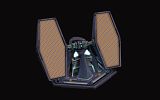 [/URL][/center]
[/URL][/center]The new system, though still using radio signals, allowed transmissions to be compressed to a remarkable degree - short bursts lasting mere nanoseconds could carry all the data needed to give commands.
The short duration of these transmissions would make it extremely difficult to capture any higher-level communications, even if the sheer quantity of radio receivers on the planet meant that a few examples might be recorded purely by chance. Still, Tikal had been using quantum-level cryptology for a long time in the military, making it highly unlikely that cracking the transmissions' codes in the lifetime of the galaxy would happen.
_________________
[Internal - 'Pichincha' 2/7]
As usual, the first thing to be done was to evaluate what the provinces had in terms of infrastructure, food supply, civil services, et al. Information about what needed replacement or upgrades had to be gathered, as well as what things were missing that were standard in Tikal proper. Luckily, most of Ecuador was in reasonably good shape.[Internal - 'Guayas' 2/7]
Both Pichincha and Guayas had good roads and electric infrastructure, but rails were lacking considerably, and the airports were embarrassing. The harbours in the provinces were in reasonable shape at least, but even they needed additions to cope with future influx of materials. And of course, all existing power plants would be replaced with Harmony Cores.
-
[Internal]
"The soul of a single virtuous man hath the worth of ten evil men, for canst not the virtuous man both slay the wicked and preserve his own?"
Bolivia's government had fallen. Not too unexpected, considering how irrational its ruler had been. The rest of Peru was placed into an official Tikalian protectorate. A short announcement regarding this was made public.
Next, a message would be sent to Parthia."My esteemed Friends of Parthia,
It is with great sadness that we must announce to you that Tikal will invoke Article V of our treaty, the cancellation clause. Hopefully, you understand that this is needed."
With great regards,
His Eternal Highness Chak Tok Ich'aak,
Ajaw ichil Tikal, Huatlatoani Tlahtoloyan, Embodiment of Kinich Ahau_________________
[Internal - 'Pichincha' 1/7]
This complete, Tikal began integrating two more regions. Together, these two regions constituted all of Ecuador, the first made up of the provinces of Carchi, Chimborazo, Cotopaxi, Esmeraldas, Imbabura, Manabí, Morona-Santiago, Napo, Orellana, Pastaza, Pichincha, Santo Domingo de los Tsáchilas, Sucumbíos and Tungurahua. They would all be united into Pichincha, encompassing an area of 178,321 square kilometres and estimated to house for now 7,377,231 people.
[Internal - 'Guayas' 1/7]
The second province would consist of Azuay, Bolivar, Cañar, El Oro, Guayas, Loja, Los Ríos, Santa Elena and Zamora-Chinchipe. Combined, the state's area would be 70,528 km² with a preliminary population of 6,875,153 people. Both provinces had considerable coastal areas, something that would have to be considered in the future.
_________________
[Internal]
The I-37 Ku'Yookol [Corsair] was the first aircraft designed specifically for not just engaging hostile planes, but even low-flying satellites and orbital craft. Extensive use of Alenium alloy-derived materials when designing the airframe combined with materials known to be suitable for high-speed airplanes resulted in an aircraft capable of going more than toe-to-toe with any contemporary plane. It would easily be able to replace any non-stealth, non-carrier fighter craft used by the Principality at the time.[center]
 [/center]
[/center]
In many respects, the design of the craft was evolutionary rather than revolutionary - it was an immense undertaking to design an entire aircraft in as short a time as it happened with the Ku'Yookol, even for the great minds of Tikal that had done this. Many of the gains were made by reproducing existing systems using more efficient materials and manufacturing techniques gained thanks to Alenium alloys, and incorporating those into existing manufacturing. However, two main innovations had been made - introduction of a variable-sweep wing design, and a new ER-3 Alenium impulse reactor/turbine system. The latter produced nearly twice as much thrust as a conventional jet turbine, the former increasing manoeuvrability at low speeds while at the same time increasing performance at greater speeds. As a result, the Ku'Yookol was capable of top speeds approaching Mach 2.25 despite a greater mass than previous airplanes.
Statistics- Top Speed - 2,750 km/h (Mach 2.25)
- Range - 5,900 km (Combat: 2,400-2,900 km depending on mission); +6,000 km with external fuel supply (ferry)
- Mass - 21,800 kg (empty); 37,900 kg (loaded); 46,200 (max. take-off)
- Service Ceiling - 21,800 m
- Rate of Climb - 410 m/s
- Hardpoints - 14 (8 external, 6 internal) + 1 gatling laser (replacing 30mm cannon)
-
Update complete.
Also, to hell with Kingdom-Hanover's borders. I gave Foch Lower Saxony.
-
Gonna take a break for a while. Lock me for a week or so.
-
"For the record, the Vice President is not voted on, but chosen by the President. Tikal nominates the UGR."
-
[Internal]
"There cannot be a crisis next week. My schedule is already full."
Infantry-sized laser weapons previously were at worst considered only in the realm of science fiction, at best 'weapons' that could blind opponents temporarily. Any laser powerful enough to be a useful weapon in combat would require a battery the size of a car - calling this impractical would be quite the understatement.
The arrival of Alenium changed this entirely. The incredible energy content of its crystalline structure allowed a battery no larger than a standard ammunition magazine to generate up to a dozen laser beams, each capable of burning through almost an inch of solid steel. Superconducting ceramics and Alenium alloys could be used to cool the weapon, storing waste heat from each shot and dissipating relatively slowly enough to avoid injury - if one was careful where they placed their hands. This removed the need for bulky refrigeration units, in turn reducing both size and weight of the weapons considerably.
To keep adjustment time for troops at a minimum, the laser weapons were designed to operate as closely as possible to conventional firearms, with only slightly enhanced range and mediocre accuracy improvements compared to their predecessors. There were some obvious differences, for example the greater damage that thermal shock weapons inflicted upon their targets. Less favourably, a laser weapon would have a lesser ammunition capacity for the same magazine size.
In order to streamline the integration of the new weapons into the armed forces, a single standardised battery would be used for all laser weapons. The design was far from complex: a cylindrical steel container with an Alenium crystal within, locking into the weapon with a simple twist. These power cells were trivial to build compared to the weapons and as such were available as long as there were more crystals to be had.
There was of course the possibility of a rapid-fire laser weapon. The ideal approach for this would be to generate a continuous beam of energy that could be swept across a battlefield, but even superconductors based on new alloys were incapable of dissipating the amount of heat generated by such sustained continuous fire. The solution borrowed from gatling guns - several rotating barrels. Instead of using a rotating barrel arrangement to permit high-speed loading of ammunition, it could be used to vastly reduce the amount of heat continual fire would generate in each individual barrel.
The scatter laser was a rapid-fire infantry weapon designed to replace ballistic machineguns. It had increased damage capacity and could suppress hostiles more efficiently, at the cost of reduced ammunition capacity. Unfortunately it still suffered 'recoil' of a sort, though in this case caused by the spinning of heavy cooling arrays rather than projectile recoil. Full accuracy could thus only be achieved by mounting it somewhere, or an exceptionally strong soldier using the weapon.
The gatling laser was scaled up to fit the cannon hardpoint of Tikal's combat airplanes, using a triangular arrangement of three powerful lasers that collectively would inflict much greater damage than conventional autocannons. The increased size and weight of the weapon of course permitted the use of more conventional materials than their smaller cousins, interestingly making construction of it and its power cell far easier and faster. Thus, it would take only a short time to upgrade fighter plane weaponry to the new design - the only difference would be increased combat effectiveness in dogfights.
Unfortunately, Zakus were at the time not able to put the new weaponry to full use and as such had to continue using their standard weapons. Lasers were simply not suitable for replacing 105 mm autocannons yet.
-
"This will be permanent. There is nothing wrong with the provinces. We are in the process of adjusting our priorities and goals. Some changes are needed."
-
[Private to Bolivia]
"Tikal is currently in the process of recalling troops from North Ucayali and Huánuco. We request you send in troops to keep the peace."
[Classified]
Indeed, all troops in those provinces were being recalled, with little explanation as to the why. Officially, the stance was that Bolivia was better-suited to administer the two provinces.
-
Most states do not respond well to threats, especially when their citizens and soldiers are threatened with execution, but Tikal capitulated faster than any regional power in history has before. The Politburo will be sure to make a note of this event for future reference. Congratulations Saxony. -Chairman Volkov.
"Tikal's main concern was that the 'invasion' had been perceived as foreign colonialism. This is upon further and closer examination not the case, which in turn led us to permit Saxony to establish themselves on Greenland. If you wish to see this as 'surrender' of some sort, feel free to misinterpret these events."
[To the Saxons]
"We appreciate your offer in regards to Thule Air Base, and gladly agree to it. Would a garrison of 1,000 Tikalian military personnel, some armoured vehicles and a squadron of airplanes be sufficiently small for this agreement?"
While only about twice the size of a 'skeleton crew', it would be enough to keep all systems in the base running, if not defend well against attack. Then again, it was far from most, if not all danger. -
[Private to Members]
"In light of recent events, the Principality has decided that it needs to take a step back and evaluate its policies. For this purpose, we will be stepping down as President of the NWO, though we will continue as member of the organisation.
"We will also open all our island bases, excepting Hawaii, to receiving and housing NWO fleets. In short, all members may use islands such as Bermuda to base fleets out of.
"Thank you for your attention, and our apologies for this sudden step."
-
[Public]
"After thorough deliberation, we have come to the conclusion that Bolivia's opinion is less unfounded than previously admitted by our government.
The Principality hereby announces that it will abandon its bases in Greenland to the Saxons. Protracted war over the Island would only result in unnecessary bloodshed, and as long as the new State's capital is in Greenland, we will have no problems with them. We apologise for our previous statements - they were made in haste and without thinking rationally about it."
__________________
[Classified]
As announced, all forces were ordered to return to their ports, though they were to remain at high alert. The bases in Thule and Nuuk would be abandoned, all relevant technology either thoroughly destroyed or taken back home. All forces in Greenland would have to be ferried to temporary bases in Quebec until they could be brought back into the mainland proper, but that wasn't much of a concern. The Saxons would have their new land.
-
[b][Classified][/b]
The Saxon message was received but not answered.
However, Tikal's fleets were called into the Atlantic Ocean with the exception of Hawaii Command. This meant four carrier battlegroups at full alert would be travelling towards the Greenlandian possessions at the greatest speed they could achieve.
The garrison of four infantry divisions, two Leopard 2A7+ tank brigades, two battalions of specialist vehicles, and several battalions of support vehicles, all a remnant of protecting against Iceland, would be reinforced with all possible celerity. At least six further divisions and several more vehicle brigades were made ready and ferried by air and sea, using the improved airstrips of the military base. Troops scattered in bases throughout Greenland and the Canadian islands would be recalled and brought to Nuuk base, resulting in another division able to defend.
Thule, Bermuda and Trinidad bases would temporarily be stripped of all garrisoned airplanes, ferried to Nuuk airbase. This would result in three squadrons of Typhoons, one of Rafales and one of F-22 at the base, while the carriers would bring further aircraft once they arrived, both fixed wing and not.
Two E-3 Sentry planes were launched to keep tabs on Iceland and the Saxons. Defence systems and local troops would be brought to highest alert, Brahmos and Tomahawk cruise missiles being prepped for launch against hostile ships. Brahmos were slated for combat vessels, Tomahawks for landing ships of all sorts.
The majority of Tikal's forces up here had spent the last years here in the north, and thus were well-adapted to the environment. Hopefully, the Saxons would be far less adapted.All of the NWO's members would be informed of Tikal's activities via secure and encrypted channels. Intercepting the Saxons while they were en route to Greenland - or anywhere else if they changed course - was of the utmost importance. Satellites would find their orbits changed as surveillance of the Saxon forces took priority over most other things.
[b][Public][/b]
The short message from Saxony was made public.
"The Principality would greatly appreciate any help that other states wish to provide in light of this rogue state trying to conquer lands like the destructive and murderous Barbarian hordes of the past"
[OOC: I'm really not used to writing war posts anymore. Hope I didn't miss any preparations.
Also, do I get to use my Optional stuff as I RPd it?] -
"The NWO has no prerogative to tell American states what they may or may not annex. The individual nations of the Americas have the right to pursue their own foreign relations. The NWO itself cannot allow or disallow Bolivia from annexing territory. States located in South America, however, can voice their opinion and 'do their thing', as it were, to help or hinder Bolivia as they wish.
"Now, Ms. Hekmatyar, I would like if you didn't make such tasteless jokes. Nobody's going to invade Bolivia because of this disagreement, and it is their right to leave the NWO if they feel uncomfortable with it. That said, the Principality's opinion on Saxony is known - we see them as foreign invaders and this ultimatum as attempted colonialism.
"I wish the Bolivian representative a good day, and farewell."
The Bolivians were then escorted from the premises, and their access to the organisation's headquarters restricted. Bolivia could rejoin at any time, but for no it was no member, and thus disallowed from participating in any discussions. -
Most of it devolved into an argument about Bolivia having a different opinion than the Caribbean and arguments about definitions of words and whatnot. Not exactly plotting about Saxony.
-
"Though you claim Article Five, we direct your attention to Article Six. This is a case of foreign colonialism, not Tikal attacking Saxony, neither Tikal being brought into a war by a non-American Ally.
"Further, didn't Bolivia withdraw from this treaty? Please leave our halls unless you desire to rejoin this alliance."
-
[Private to all NWO members]
"Ladies and Gentlemen, we have today received a threat by the Saxons that they will attack Greenland within a day if we do not give in to their demands.
Here is the message: [Message from Saxony]
The Principality of Tikal requests solidarity from our friends and allies in the NWO to repel the Saxons and prevent Greenland from falling into the hands of these foreigners."
Director of Diplomacy,
Clemente Marroquín Rojas
Principality of Tikal
-
I'd like to bring to the GMs' attention this thread, Click
as well as this post as part of it, click
Is what Hereno is doing there even legal? He gave up his nation in Saxony but somehow now has Iceland as his protectorate and his entire army, navy and airforce there? An entire army just straight up decided 'lol whelp $%&@ our country and people, we're gonna go rape and pillage the holdings of a nation we've never had anything to do with before'?
I call 100% grade Bull.
Also, isn't this kind of LOLHORDE !@#$%^&* part of why CNRP2 was established in the first goddamn place?
Disclaimer: I'm not complaining because of Hereno somehow standing a chance to win. ICly, I have an entire coalition that would protect me. I'm complaining because it screams goddamn bull.
Edit: At the very least I request the RP to be put on 'ice' while it's being discussed by the GMs.
-
[Internal]
"Without our work, nothing is built. Without our work, no wealth is gathered. Without our work, no secrets are discovered. Without our work, no base can be defended. Now you tell me: why should our work be taken for the benefit of others?"
Further study revealed two or three other new types of crystals and crystal arrangements, though none so surprising as Alenium. However, taking Alenium's unique structure as inspiration, it didn't take long for Tikalian material scientists to develop new kinds of alloys.The new alloy technology was founded on a number of exotic materials, every last one of which had their own remarkable properties. Some of the newly developed materials had tensile strength or heat resistance an order of magnitude greater than anything previously known, while some - unfortunately exceedingly expensive ones for now - even had more exotic properties such as room-temperature superconductivity.
Nearly all of them were advanced ceramics with a chemical structure alien enough that one might think it hadn't originated on Earth in the first place, let alone a cave filled with crystals of all sorts. Some of the new materials sported properties previously thought impossible with current physics, yet here they were, all fundamental elements previously known to science. One could compare it to the difference between coal and diamond - fundamentally the same stuff, but radically different in practice.
Given the exceptional heat resistance, the most obvious application would be to augment existing armour layered armour with the new materials. However, the efficiency in dissipating heat was so great that new methods had to be developed to re-melt and shape the materials in order to fabricate plates of armour - or panels to bleed heat off into space.
Methods to shape the new alloys were developed in record time, however. To make it short, using the vast energy delivered in short periods of time by Alenium, specialised lasers could be built that blasted the material until it began melting. Practically any military and civilian construction could potentially be improved by incorporating the Alenium Alloys into them.
Further study of the alloys and Alenium was expected to reveal even greater benefits in the long run. -
"The Principality of Tikal recognises the change in name and wishes Brazil peace and prosperity in the future."



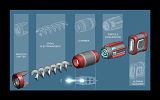
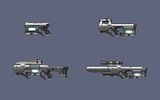
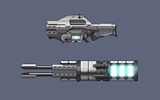
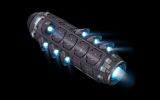

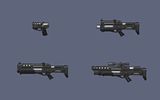
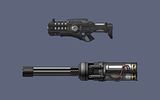
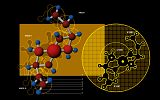

World Map & Rules: CNRP'40
in Fantasy RP (IC)
Posted · Edited by Lynneth
Kindly requesting Central American countries and their islands, Colombia&islands, plus Galapagos as 'Communion of America'.
If that's too much, leave Colombia out.